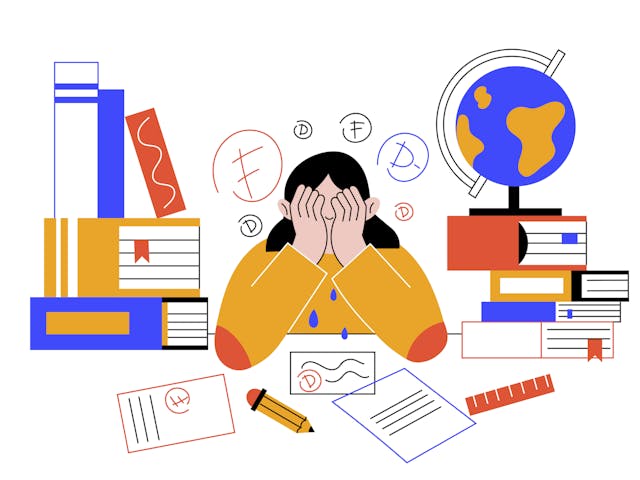Millions of students across the United States spent their summers in learning and enrichment programs, many of which employed intensive tutoring designed to bring math and reading scores up to grade level.
These efforts can be important and life-changing, yet research finds that increased learning time alone will not be enough to recover from the pandemic’s devastating effects on learning.
Recent data out of the Center for Research on Education Outcomes (CREDO) at Stanford University demonstrates that simply offering more instruction for students is insufficient, in part because it fails to account for each student’s pace of learning. Remarkably, researchers have determined that even an extra five years of schooling would still leave a quarter of students behind on 12th grade math and reading benchmarks. Despite this evidence, many of our COVID-19 recovery dollars are being spent on interventions that emphasize high-dosage tutoring rather than other potential strategies.
As lead researcher at Breakthrough Collaborative, a national nonprofit building supportive out-of-school-time learning communities to improve educational equity, I recently had the opportunity to closely study an after-school math tutoring program our organization piloted during the 2021-22 school year.
That experience showed me that high-dosage tutoring can't be the only tool we offer students after the disruptions of COVID-19. A successful approach must engage social-emotional learning (SEL), adapt to actual, real-world student needs, and incorporate community support, so that the burdens don't fall exclusively on students and teachers.
So — what does that look like?
We must go beyond dosage-dependent tutoring programs, and center the social and emotional needs of students. David G. Gil, late professor of social policy at the Florence Heller School for Advanced Studies in Social Welfare at Brandeis University, argued that individuals can only reach their full potential when human needs such as psychological safety are met.
Unfortunately, recent data demonstrates that the pandemic placed huge strains on the mental health and well-being of students, teachers and principals alike.
The good news is that SEL programs have been proven to have a powerful effect on students’ coping skills while also positively impacting academic achievement. The bad news is that SEL has become highly politicized in recent years. Opponents have misleadingly conflated SEL with critical race theory, and several states have passed legislation designed to limit its use in schools. Nevertheless, the research shows educators and parents should continue to advocate for SEL, and disregard the political noise that accompanies it.
Any program that is in service to students must respond to their ongoing and changing needs. In the middle of our after-school math tutoring pilot, we held focus groups with students and families to hear their feedback, with the intention of adjusting the program if necessary.
Through these focus groups, staff at one of our sites learned that students needed more community- and relationship-building time, and more time for homework support, even if that meant fewer hours of tutoring. As a result, program leaders changed their model, reducing tutoring time and adding lessons on math identity and SEL through math contexts.
This pivot meant that our tutoring program no longer qualified as “high-dosage,” but that trade-off was amply justified. This site was able to maintain a strong after-school attendance rate of 79 percent — impressive given that maintaining attendance after school is notoriously challenging — and their students’ average math gains surpassed their expected growth at the end of the year.
Our schools cannot and should not do this work alone. Much of the burden of student pandemic recovery is landing on our educators and children, two groups of people who were pushed to the limits these past few years.
Ideas to increase instructional time, like extending the school year and boosting classroom time during the day, are logical ones, but these ideas continue to place the burden on students and their teachers. This approach also ignores the fact that programs such as the Massachusetts Extended Learning Time Initiative, which provides funding for as much as 300 hours of additional instruction time per year, had no statistically significant impact on student achievement, and produced higher levels of teacher and student fatigue.
One avenue to support and extend the good work schools are doing is to leverage community-based organizations, particularly those with staff who have similar backgrounds to the students they serve. Breakthrough has seen this firsthand, as we intentionally recruit college-aged teaching fellows who mirror the diversity of our students, resulting in strong relationships and sense of belonging.
Research has proven the powerful benefits experienced by students who are taught by same-race teachers. According to that research, Black students with at least one Black teacher in kindergarten through third grade are 13 percent more likely to graduate from high school and 19 percent more likely to enroll in college. One plausible reason for this finding may be that Black teachers are serving as role models for their students.
Support can’t stop after graduation. The reality we face is that more students will leave high school with gaps in knowledge than in pre-pandemic times. That means we must also support this generation of young people further into adulthood.
We should consider how wraparound services can be provided to young adults as they navigate life after high school, and prioritize postsecondary initiatives like college success programs that partner with young people to help them transition into adulthood and reach their fullest potential.
Given the setbacks students are facing after the pandemic, it can be tempting to rely on solutions that increase instructional time, but a variety of solutions to support our students will be necessary to set them up for success in school and in life. As we look beyond the current crisis, let’s ensure we are taking into account all of our students’ needs, and not limiting our interventions to intensive instruction alone.


